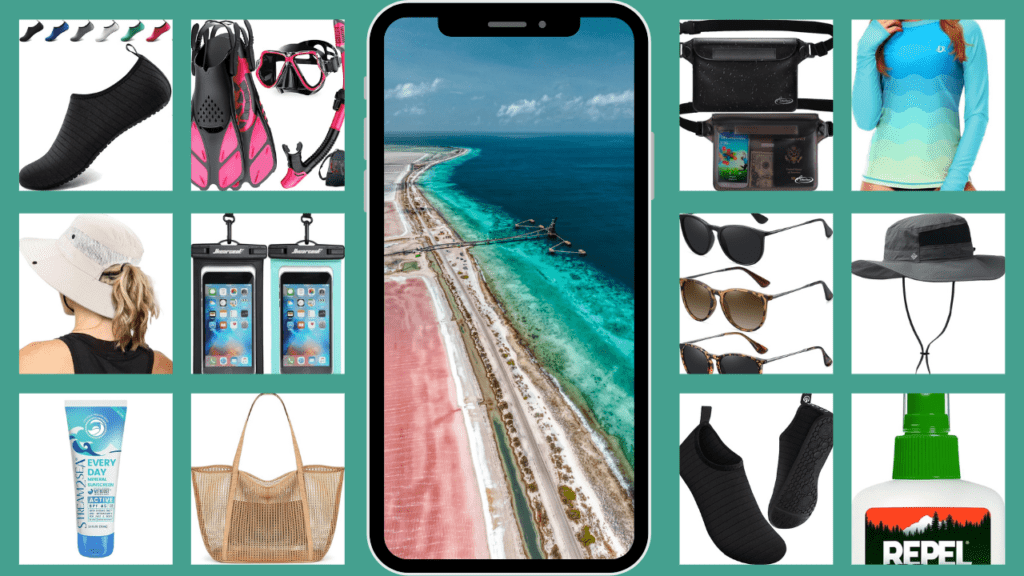If you’re considering scuba diving on Bonaire Island in the Dutch Caribbean, you’ve likely heard Bonaire Island has over 80 dive sites and is one of the best Caribbean scuba diving destinations in the world.
However, one thing you might not know, is some of the best diving on the island IS NOT shore diving (this is up for debate!) and this island is filled with things to do other than scuba diving (covered in this blog post by clicking here).
Read on for scuba diving insider tips, helpful things to know about diving on Bonaire as well as a breakdown of some of the top dive sites!
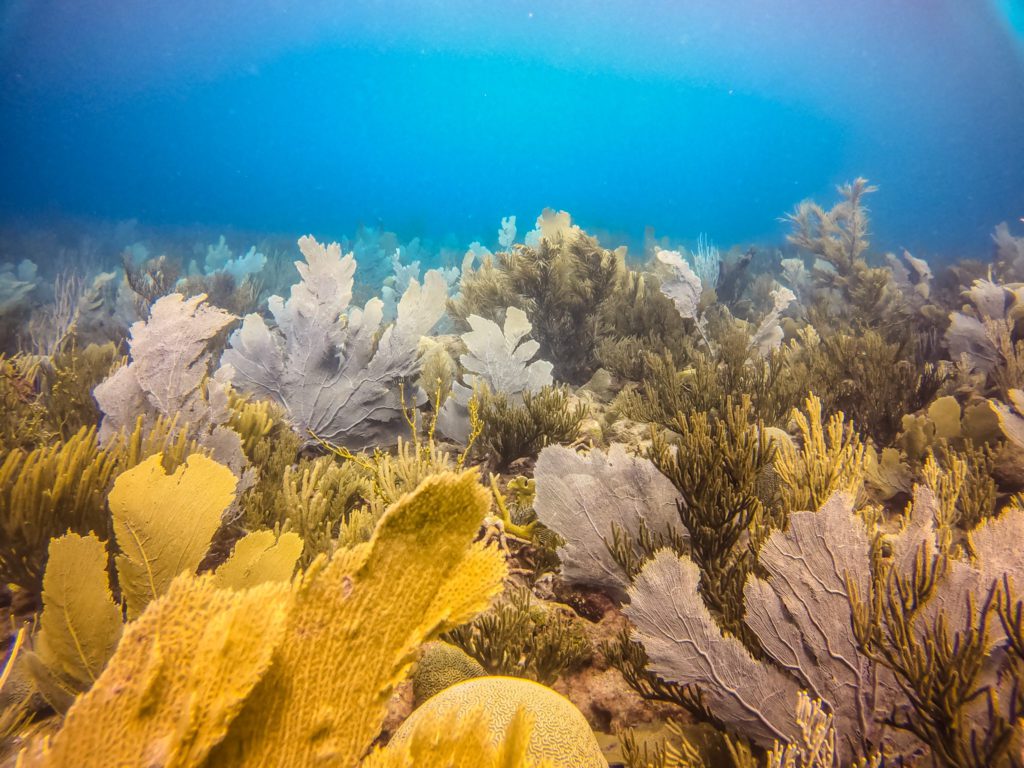
Bonaire Island is a shore diving destination
The majority of dives in Bonaire are shore dives, which gives you the freedom to dive and explore at your own pace and on your own schedule.
Obviously if you don’t know how to navigate your own dives or don’t have your own group, there are MANY dive operators that can take you (read on for that below).
It’s helpful to know that a (very) few dives sites are accessed via boat – or you can charter a private boat and make EVERY shore dive a boat dive.
It’s really up to you based on your preference and skill level.
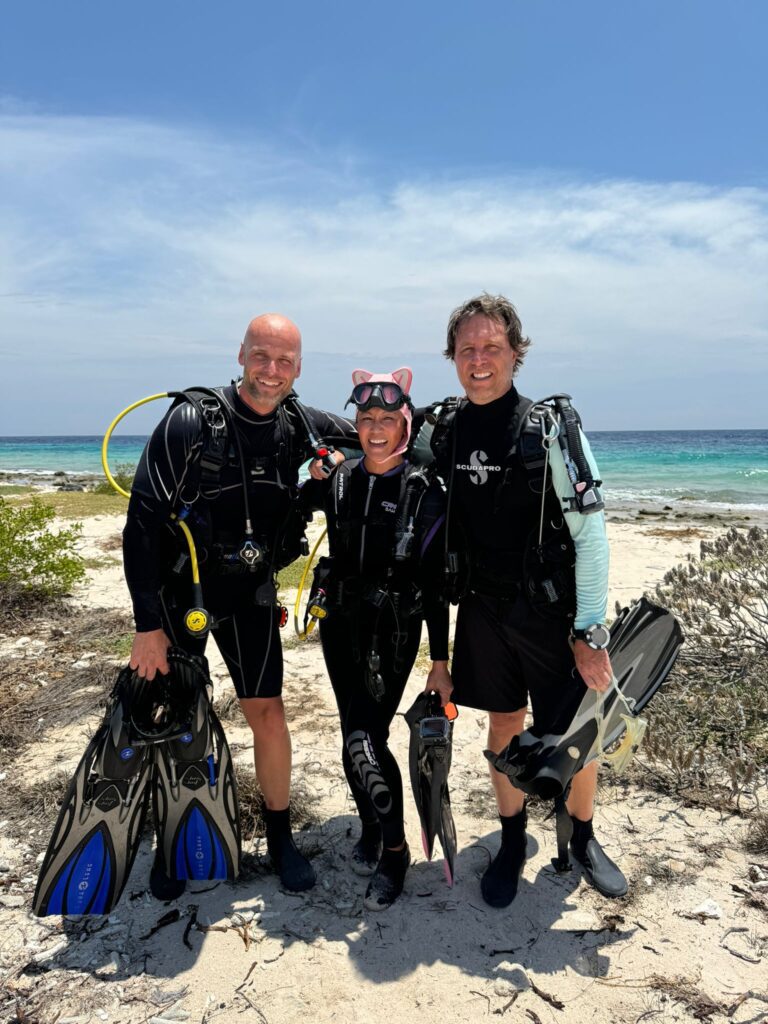
If you’ve never been shore diving, it’s a different experience than boat diving. It requires a higher level fitness because you can’t simply “walk into the water” at every dive site.
Sometimes there are waves, challenging rocks to navigate around, or a ladder or stair entry.
It’s helpful to know that the dives are “ranked by ease of entry” with there being “known easy dives” (like Salt Pier or Something Special or 1000 Steps) vs. harder entry dives (like Baby Beach, Shrimp Factory or Lighthouse).
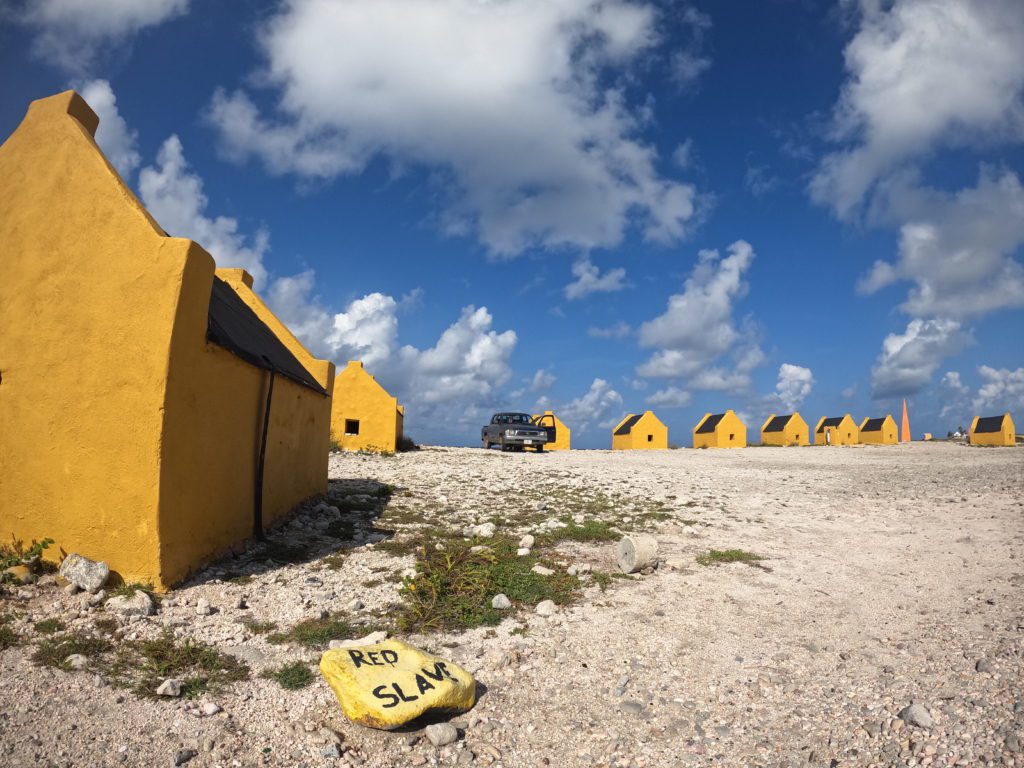
One thing that is VERY helpful about Bonaire, it has dive markers. Each dive site has a yellow rock that marks the dive site, a yellow rock to show the best place to enter and exit the dive, and a dive marker in the water to show the best place to drop down.
Generally the dive markers indicate the easiest point of entry. This isn’t always the case, but usually it is.
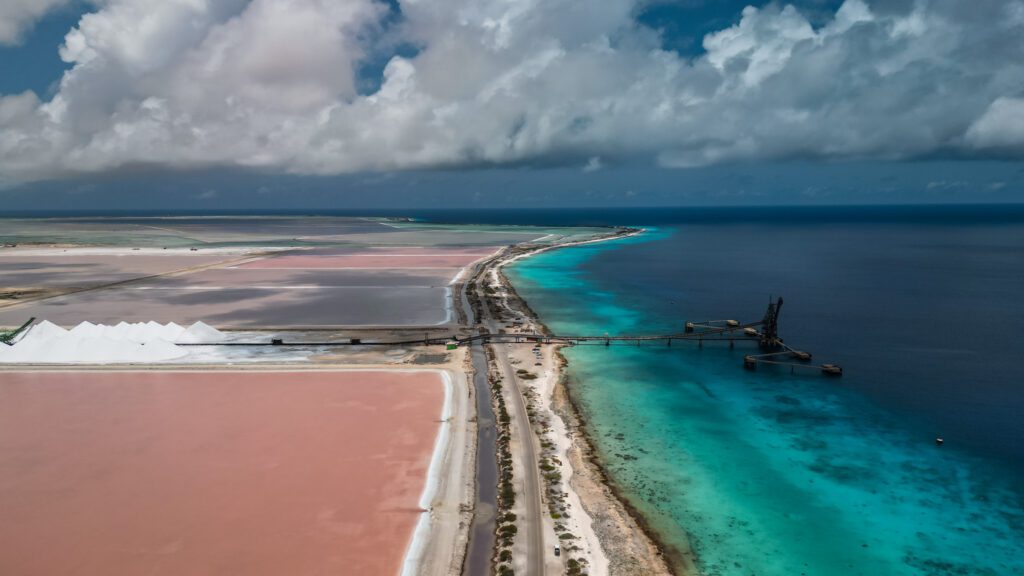
Secret tip: Don’t just rely on the dive maps
If you’re heading to Bonaire for some scuba diving, you might think the dive map is your ultimate guide.
While it’s true that the marked sites are fantastic (and easy to find thanks to the yellow rocks and dive markers), some of the best dives aren’t on the map at all!
A perfect example is a dive site called “The Rock,” which became one of my favorites after a local tip.
Not only did I see amazing marine life like seahorses, but I got to explore a hidden gem not crowded with divers.
Want to see the seahorses I saw? Check it out in the full Youtube video about “Insider Secrets Diving Bonaire” by clicking here or below!
So, don’t limit yourself to just the map—talk to locals or experienced divers to discover the unmarked spots that are worth diving. And sometimes, depending on conditions, it makes sense to enter or exit between marked dive sites.
Make sure your navigation skills are on point for these off-map adventures!
What you can expect to see scuba diving Bonaire Island
When I dive Bonaire, the “under the sea” song from The Little Mermaid is playing on repeat in my head. Well, not literally, but that’s what it looks like.
While you can have some fun sightings of larger things in Bonaire, generally scuba diving this island is all about the small stuff.
You can more or less guarantee the lineup below on every dive, with various dive sites offering a “higher likelihood” of other unique things (Salt Pier will have schools of fish, Tolo has octopus in the shallows, Red Slave tends to have rays hiding in the sand, Turtle City will guarantee turtles, etc).
The usual suspects on EVERY dive…
- Parrotfish – Known for their bright colors and beak-like mouths, parrotfish are often seen around Bonaire’s coral reefs. They play a key role in reef health by consuming algae.
- Angelfish – You can spot the striking Queen Angelfish and French Angelfish around the reefs, distinguished by their vibrant colors and elegant shapes.
- Trumpetfish – These slender, elongated fish often hover vertically among coral and are excellent at blending in with their surroundings.
- Sergeant Major – Small but colorful, these fish are easily recognized by their yellow and blue stripes and are often found near the surface.
- Butterflyfish – Delicate and beautiful, species like the Banded Butterflyfish and Four-eye Butterflyfish are common in Bonaire’s waters.
- Tarpon – Large, silver fish often seen near the shore or under piers, especially during night dives, as they use divers’ lights to hunt.
- Pufferfish – Both the Balloonfish and Porcupinefish are frequently encountered, often inflated when feeling threatened.
Secret Tip: Spend Time Diving in the Sand
Most divers in Bonaire tend to head straight for the reef, following the typical pattern of entering from shore, heading to the mooring line, and diving along the reef.
But one of the best-kept secrets of Bonaire is the sandy areas!

Yes, you might not find the massive marine life like sharks, but the sand is home to incredible small creatures—think octopuses, jawfish, and seahorses.
Jolanda once saw three eagle rays, ten turtles, and four seahorses in the sand, while another group diving nearby saw almost nothing on the reef!
The trick? Dive along the shoulder of the reef so you can scan both the sand and the reef for the best of both worlds.
Weather and Water Temperature on Bonaire Island
The weather and water temperature on Bonaire are more or less the same year round.
You can expect a tropical climate with warm weather year round, making it an ideal destination for scuba diving in any season.
Average air temperatures range between 77°F to 88°F (25°C to 31°C), with a constant cooling breeze from the trade winds.
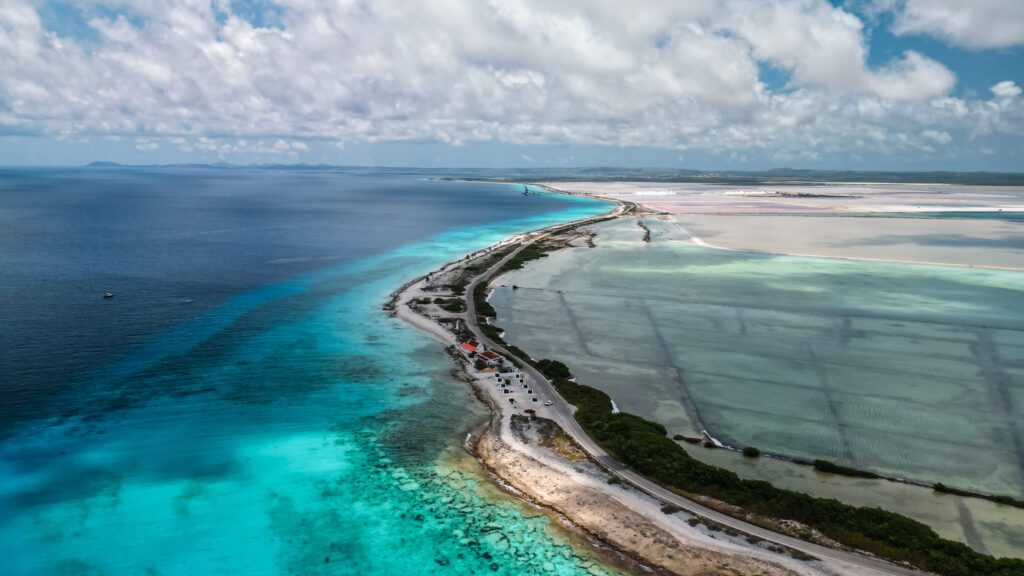
The island experiences a dry climate, with the wettest months typically being from October to January, although rainfall is usually brief. Bonaire also lies outside the hurricane belt, so storms rarely affect it, ensuring good weather conditions for diving most of the year.
I’ve been diving while it’s raining many times and it’s a great experience as long as it doesn’t rain so hard it stirs up the sand.

The water temperature in Bonaire remains comfortable throughout the year, generally ranging from 78°F to 84°F (25°C to 29°C).
This makes it possible to dive without a thick wetsuit even in the cooler months (albeit I still dive with this 2.5mm wetsuit and sometimes it doesn’t feel like enough because I run cold).
See the top selling 3mm wetsuits on Amazon by clicking here!
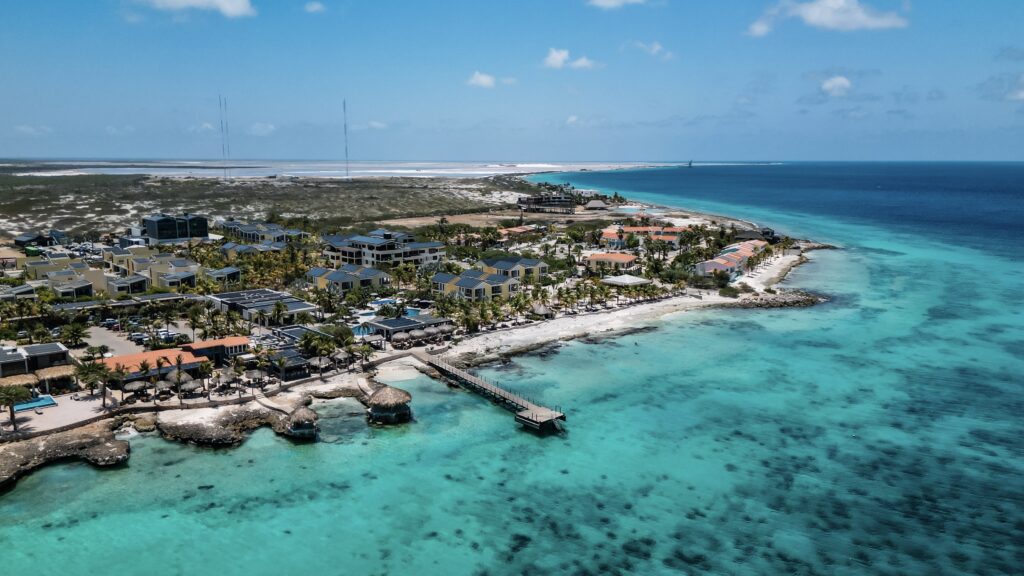
When is the best time to scuba dive in Bonaire?
The best time for scuba diving on Bonaire is from April to November, when water visibility is at its clearest, often exceeding 100 feet. While the high season for tourism runs from December to April, diving conditions remain excellent year-round, and those seeking fewer crowds may prefer visiting during the quieter months.
However, if seeing unique marine events like coral spawning and turtle nesting are on your agenda, plan your visit for late spring to early summer (April to June).
Despite these suggestions, the island’s vibrant marine life and excellent diving conditions are present year-round.
Who should you dive WITH on Bonaire Island?
As you’d expect, there are a lot of generic dive operators on Bonaire Island.
There are two specific experiences I recommend if you’re looking for a guide to take you on an EPIC diving experience on Bonaire.
1. Have a curated experience with Sij and Jo
Scuba diving with Sij and Jo, aka Divemasterlife and Go with Jo, is one of the MOST CURATED experiences you can have on Bonaire.
These two are total know the island’s underwater spots like no one else (Sij alone has over 4,000 dives on Bonaire).
Whether it’s finding seahorses or showing you off-the-beaten-path dive sites, Sij and Jo make every dive feel unique. The coolest part? They dive on their days off because they love it that much, and that passion really shows.
They keep their dive groups small, so you get super personal attention, and honestly, diving with them is just fun and relaxed.
If you’re looking for a chill but expert-guided dive adventure, you’ve got to hit the water with Sij and Jo.
2. Try boat diving on the East Coast with East Coast Divers
Bonaire East Coast Diving (and booking well in advance) is an absolute must when scuba diving in Bonaire (get a discount by using promo code LOZADA23). The East side of the island will give you a glimpse into a side of Bonaire you simply WILL NOT get shore diving from it’s North, West and South dive sites.
This one is up for debate, but to be honest, if you want to see 57 turtles on a 57 minute dive, you can only do that in Turtle City. And the only way to get to Turtle City is by BOAT.
Want to SEE what these dives are like? Checkout the video below!
Not only that, you’ve got access to Funchi Reef and all the BIG things. Big eels, big fish and if you’re ever going to see sharks and other things like manta rays, it’s likely off a boat dive.
Shore diving is a must on Bonaire, but you’ve MISSED THE BOAT if you don’t do a dive off the East side of Bonaire Island.
Even better, grab a discount using LOZADA23 or mentioning this blog post to Fred when you book with East Coast Diving.
Want more dive operator suggestions?
I care about other traveler’s reviews. See the top rated dive operators on Bonaire!
Follow the rules: Get your required STINAPA tags
Before you hit the water, make sure you’ve paid your Stinapa nature fee, which is required for all divers in Bonaire.
All divers in Bonaire are required to purchase a Stinapa Marine Park tag, which funds local conservation efforts. To ensure the preservation of the marine environment, touching or disturbing marine life is strictly prohibited.
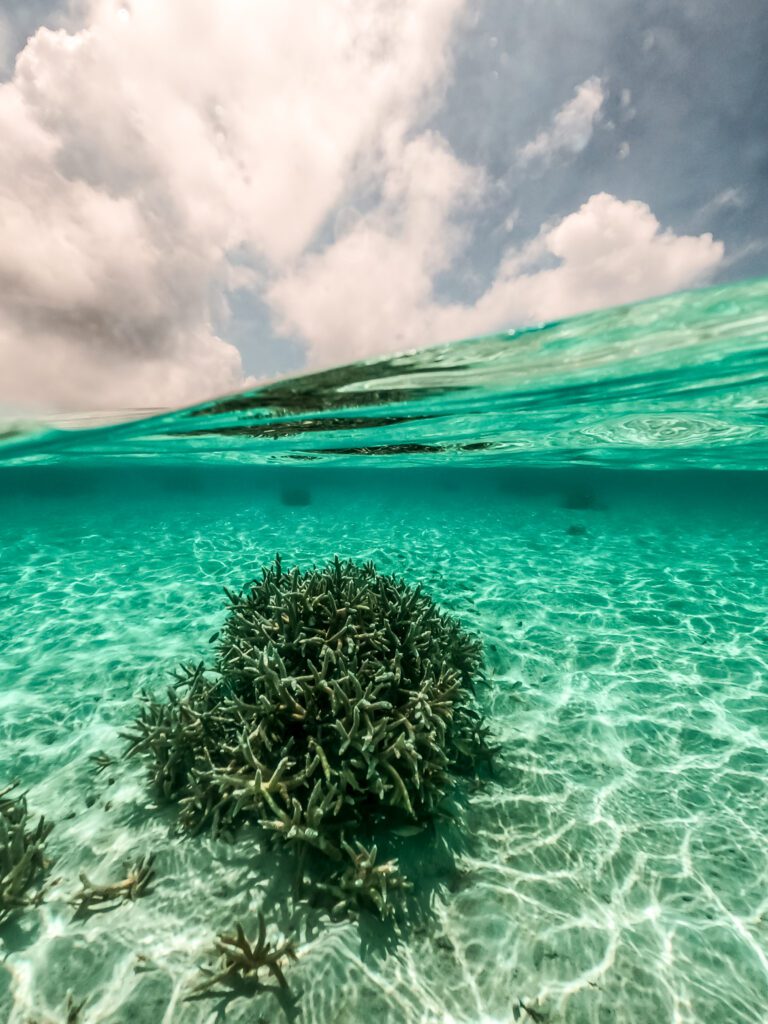
As part of the marine park rules, divers are also required to complete a local orientation and checkout dive if they’re diving independently. Check with your dive center or local authorities for the most current guidelines and regulations to ensure a safe and responsible diving experience.
Paying online is easy, just make sure you do it on the actual legit Stinapa site (and not a scam site)!
You’ll receive a QR code as proof of payment, but don’t stress about having it on hand at all times while diving. If the enforcement team checks and you don’t have your QR code with you, you can always provide proof later by visiting their office. Just don’t forget to pay the fee before you start diving!
Best strategies for getting your air or nitrox tanks
Whether you’re diving with an operator and need to show up with tanks or if you have your own dive group, below is something I recently discovered after diving Bonaire for four years.
When I first started diving in Bonaire, I thought my only options were buying individual tanks or going with the unlimited air package.
Turns out, there’s a third option most dive shops don’t advertise much—the air or nitrox punch card!

With this option, you pay a set price and use a punch card to swap out your tanks as needed. It’s perfect if you’re not doing enough dives to justify the unlimited air package (which usually makes sense if you’re doing at least three to four dives a day).
So if you’re planning a more laid-back dive schedule, this card might save you some money and still give you easy access to tanks whenever you need them.

Top Mistake: Don’t Dive Too Deep
Many divers make the mistake of going deep just because they’re certified to dive to a specific depth.
In Bonaire, though, most of the action is in the shallows! On the majority of his dives, Sij for example, stays at around 30 feet and still enjoy 70-90 minute dive times. You’ll find vibrant reefs, diverse marine life, and stunning views without having to go deep.
If you’re looking to see bigger marine life, book an east coast dive where you might spot larger species like rays and turtles. But for everyday shore diving, stick to the shallows for longer, more rewarding dives.

Getting around Bonaire Island
When diving on Bonaire here’s how I think about it:
- If you’re one person doing 3 dives or less per day, you can get away with a small rental car
- If you’re more than one person and doing more than 2 dives per today (i.e. more than 4 tanks a day) get a truck
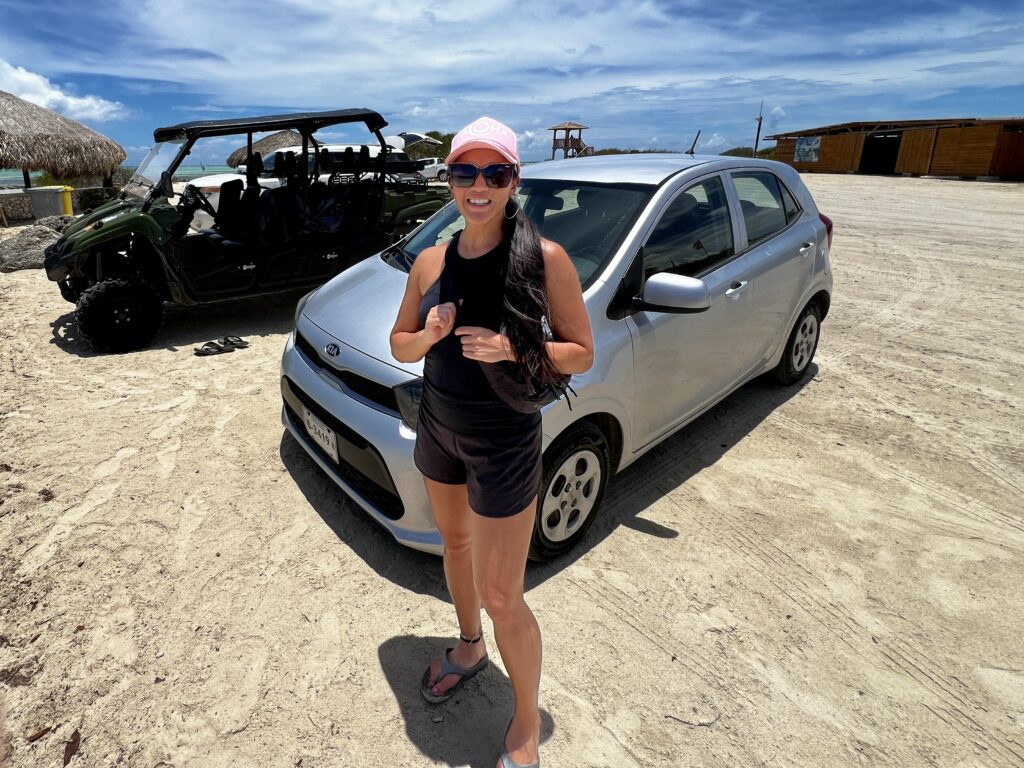
Here’s a quirky but important tip: on Bonaire, it’s common practice to leave your car unlocked while you’re out diving.
Why? Because locked cars are more likely to get broken into, especially if thieves think you’ve left valuables inside.
So, leave your windows rolled down and keep all your valuables out of the car when heading out for a dive. That said, if you’re at a busy dive site, some divers debate whether to leave their cars unlocked or not.
For more remote spots, though, keeping your car unlocked is a smart way to avoid break-ins.
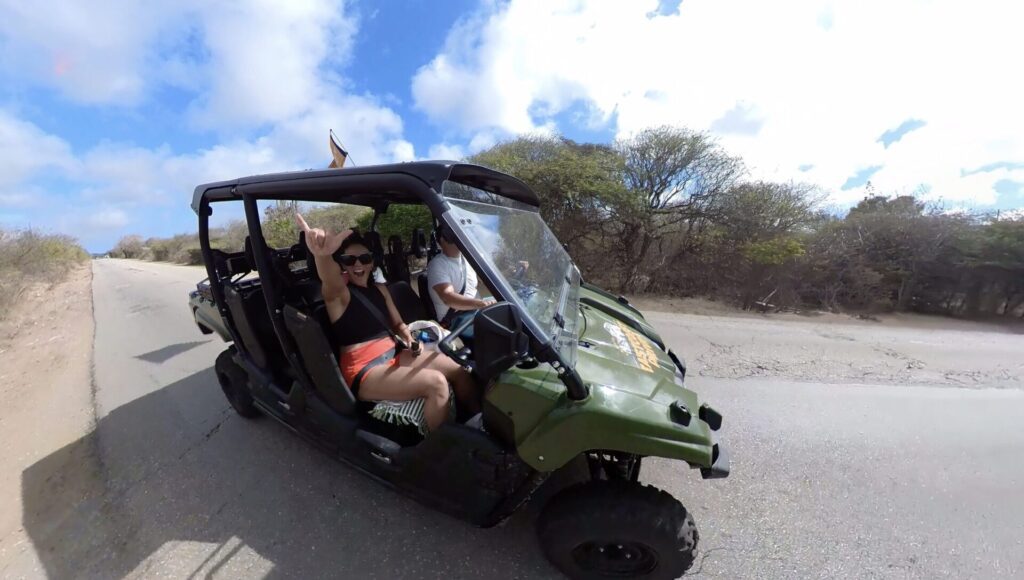
A breakdown of the above can be found in an overview of Bonaire scuba diving with more helpful tips in the video below
The BEST Bonaire dive sites
Bonaire Island has some of the best shore diving in the world, but there is a reason these 6 Bonaire dive sites standout as ones not to be missed.
- 1000 steps (a very popular spot on the island)
- Salt Pier (for variety of what you can see)
- Turtle City and White Hole (to see “big stuff” and more turtles than you can count)
- Something Special (if you like eels)
- Hilma Hooker (if you like wrecks)
- Red Slave (given it’s location on the corner of the island, this dive has a very unique profile)
The “6 dive sites NOT TO MISS” video below breaks down what these dives are like, why they are special and unique, and helpful tips on what to know.
Other dive sites
Want more? I break down 10 additional dive sites with helpful tips around the entry/exit, profile and what you might be able to see in this video including:
- Vista Blue
- Bari’s Reef
- Jeff Davis
- Andrea I
- Lighthouse
- Alice in Wonderland
- Red Beryl
- Boka Bartol
- Playa Funchi
- Tolo
Want to see a map of the Bonaire Dive Sites? Check it out below!
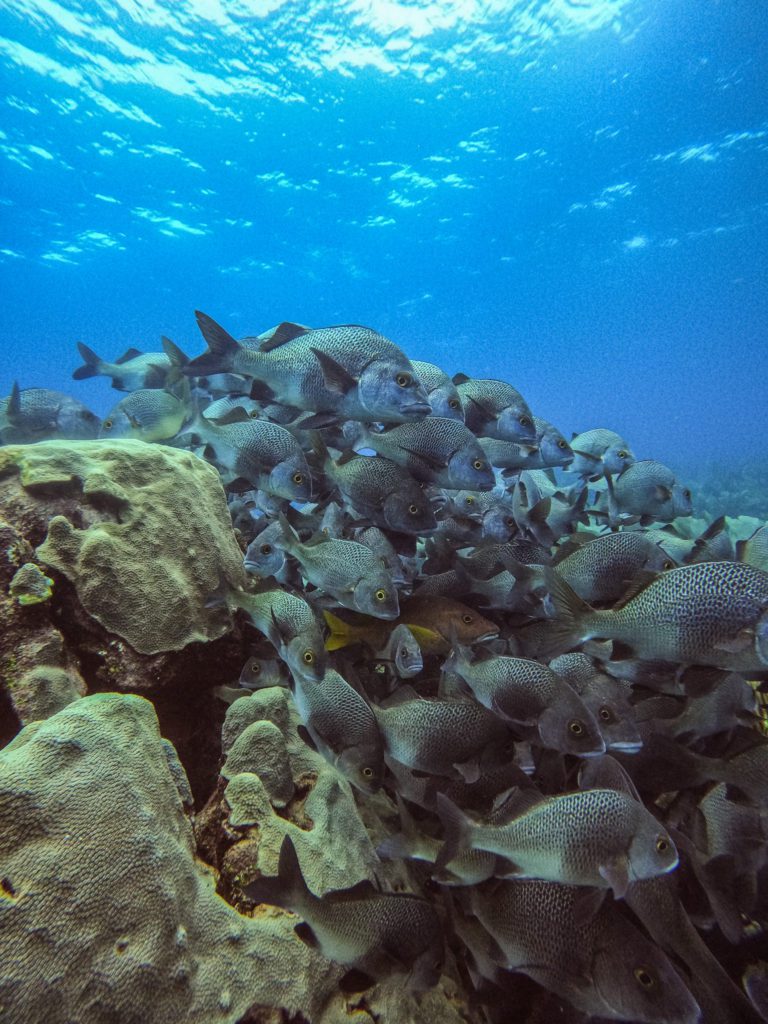
Do I need to be certified to scuba dive in Bonaire?
Yes, you do need to be certified to scuba dive independently in Bonaire.
However, if you’re not certified, you can still experience diving through introductory “Discover Scuba Diving” courses offered by many local dive centers.
These courses allow you to dive under the direct supervision of a professional instructor.
One option for this is with VIP Diving. I’ve been renting my scbua tanks from them for years and they offer this kind of service!
Can I rent diving gear on Bonaire?
Yes, Bonaire has numerous dive shops and resorts that offer diving gear rentals. You can find everything from full equipment sets to individual items based on your needs.
I use VIP Diving for my scuba tanks, but they also have gear for rent.
Insider tip: DO NOT forget your camera equipment. While there are a few shops around the island that have camera gear, if you’re in a pinch (i.e. “I need a new Go Pro Underwater Filter!” you might be sh** outta luck).
What are the top things to do BESIDES scuba diving?
Bonaire is JUST for divers, right? No! There’s a ton to do on the island if you’re not scuba diving. Read more here or checkout the video below!
Bottom Line
Bonaire is a top shore diving destination with nearly 100 accessible dive sites, all clearly marked by yellow rocks. Be prepared for the physical challenge of shore diving by bringing proper diving boots to protect your feet from sharp rocks and coral.
One unique tip: don’t lock your car at dive sites to avoid break-ins—leave the windows down and no valuables inside. Renting a truck is essential for hauling gear, and potholes make it a better option than smaller vehicles.
While most divers bring their own gear, rental options like VIP Diving provide everything you need, including unlimited air packages.
Though Bonaire shore diving is focused on small marine life, don’t miss the opportunity to have a curated dive with Sij and Jo or a boat dive with East Coast Divers to see bigger creatures like turtles.
